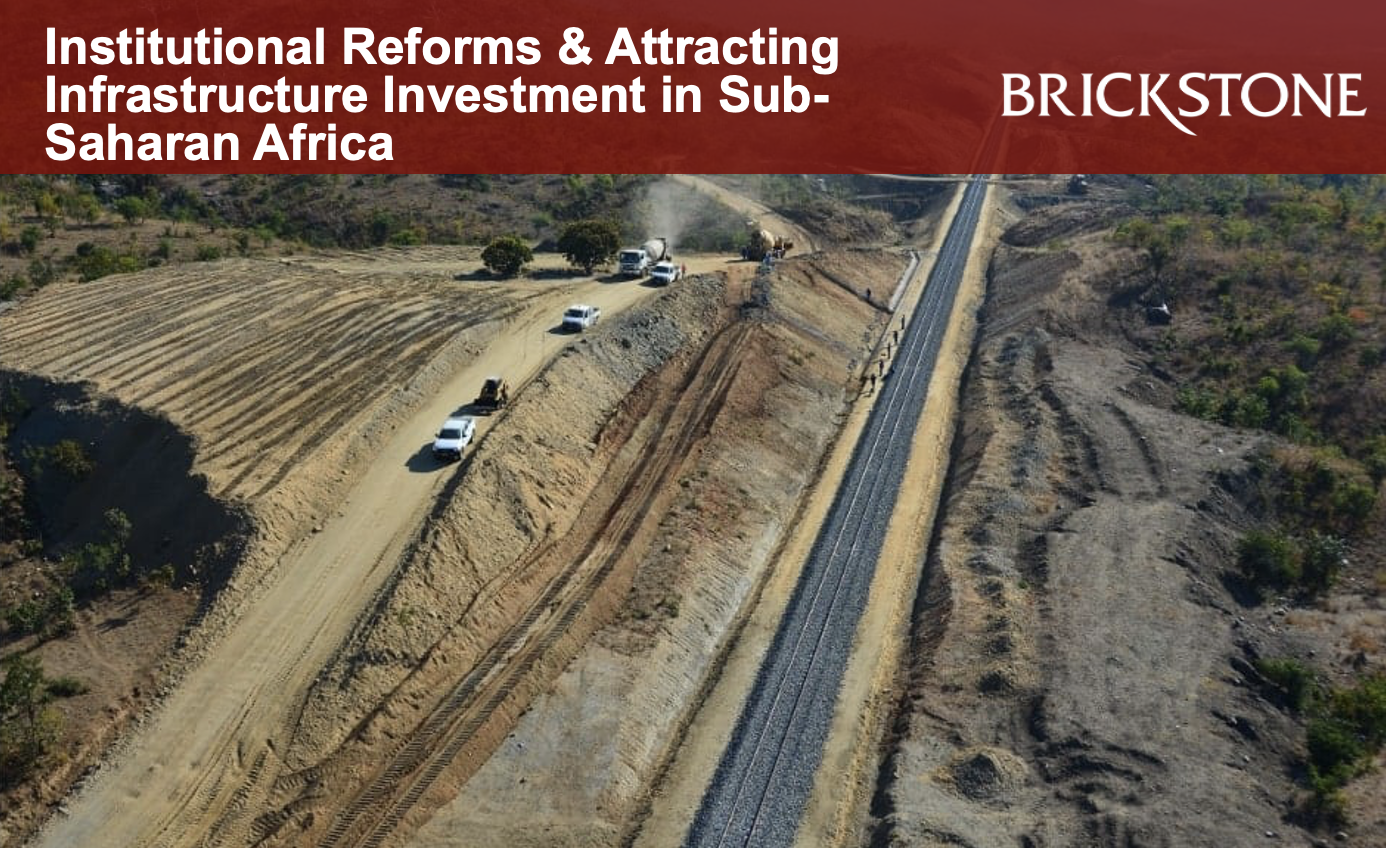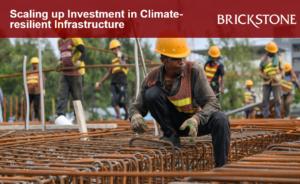Institutional Reforms & Attracting Infrastructure Investment in Sub-Saharan Africa
Need for Infrastructure Investment in Sub-Saharan Africa
According to the World Bank, infrastructure is an unmissable driver for development in Sub-Saharan Africa and beyond. It not only stimulates private investment and productivity growth, but also facilitates domestic and international trade , while safeguarding the environment.
Yet the infrastructure needs in the region to meet the Sustainable Development Goals (SDG) are immense, and largely unmet. The World Bank estimates that countries in Sub-Saharan Africa need to invest 7.1% of their GDP annually in SDG-related infrastructure, but have actually only been investing around half of this level, 3.5% of GDP.
This article by Brickstone Africa reviews the World’s Bank publication on the critical need for institutional reforms in attracting infrastructure investment in Africa.
Scaling Up Infrastructure Investment in Africa
According to the World Bank, between 2015–2018, governments in the region have shouldered the bulk (90%) of infrastructure financing from their own resources or external borrowing, leaving the small residual (10%) to the private sector.
If Africa wants to leapfrog its infrastructural hurdles, then it must look beyond its own pockets to bridge its huge financing gap. The continent, according to the African Development Bank (AfDB), still requires between $68 billion to $108 billion infrastructure investment every year to build better infrastructure.
And while already insufficient compared with needs, it is likely that the capacity of governments in the region to finance infrastructure in the next decade will shrink. Average public debt over GDP was estimated at 71% in 2021 (up from 43% in 2013), increasing debt service obligations at the expense of other expenditures—including investment infrastructure—and reducing countries’ attractiveness for creditors given heightened debt distress risks. And recovery from COVID, including for governments to mobilize domestic resources, will take time.
Clearly, given the limited fiscal latitude, the substantial infrastructure investment needs in Africa cannot be met unless there is a sizable response from private sector financing, to which all eyes are now turning . But how much private sector infrastructure financing can countries in the region realistically attract, and how can it be attracted?
A recent study explores this question using a novel data set covering all important infrastructure projects conducted in Sub-Saharan Africa between 2008–19. It suggests that progress (or deterioration) in countries’ governance indicators explain most of the variations over time in private participation in infrastructure (PPI) within each country in the region.
In bridging this huge infrastructure financial gap, African countries will require partnership and collaboration between public and private sectors, as well as institutional investors. This gives room for immense infrastructure investment opportunities for investors to tap into. This however, will really significant improvements in the business environment is critical at this juncture.
Among them, the indicator capturing the quality of the regulatory framework—such as the existence of an independent regulator, fair competitive practices, and investment freedom—influences more PPI variations than other governance indicators such as the control of corruption, the rule of law, or voice and accountability. The study also suggests that progress in the regulatory framework generates higher investment payoff in countries where these are inadequate, often also in countries affected by fragility, conflict, and violence (FCV).
Such results confirm anecdotal evidence. In Senegal, the regulatory reform aimed to introduce a transparent and competitive bidding process in the power sector unlocked a foreign direct investment of $52 million (0.2% of GDP) in solar energy in 2018.
In Ethiopia, an FCV country, the issuance of competition and licensing directives in 2019 within one year opened up the telecom sector to private sector participation with a first investment of $850 million (0.9% of GDP) to acquire an operating license, to be followed up by over $1 billion in additional infrastructure investments. These are just two measurable examples where changes in the regulatory frameworks led to increased PPI financing.
Using these results allow us to simulate the impact of improving the regulatory framework on PPI in each country in Sub-Saharan Africa based on respective current situations and the observed recent dynamics of progress, or deterioration, in regulatory frameworks.
It turns out that continued progress (or reversal in deterioration) over four years could raise PPI over GDP by 0.8 percentage points on average, rising up to more than 1.5 percentage points in countries such as Rwanda, Gabon, Liberia, Madagascar, and Mauritania. At the aggregate regional level, it would mean an additional $20 billion worth of investment in infrastructure by 2025 compared with a situation of unchanged regulatory quality.
Read more here.






